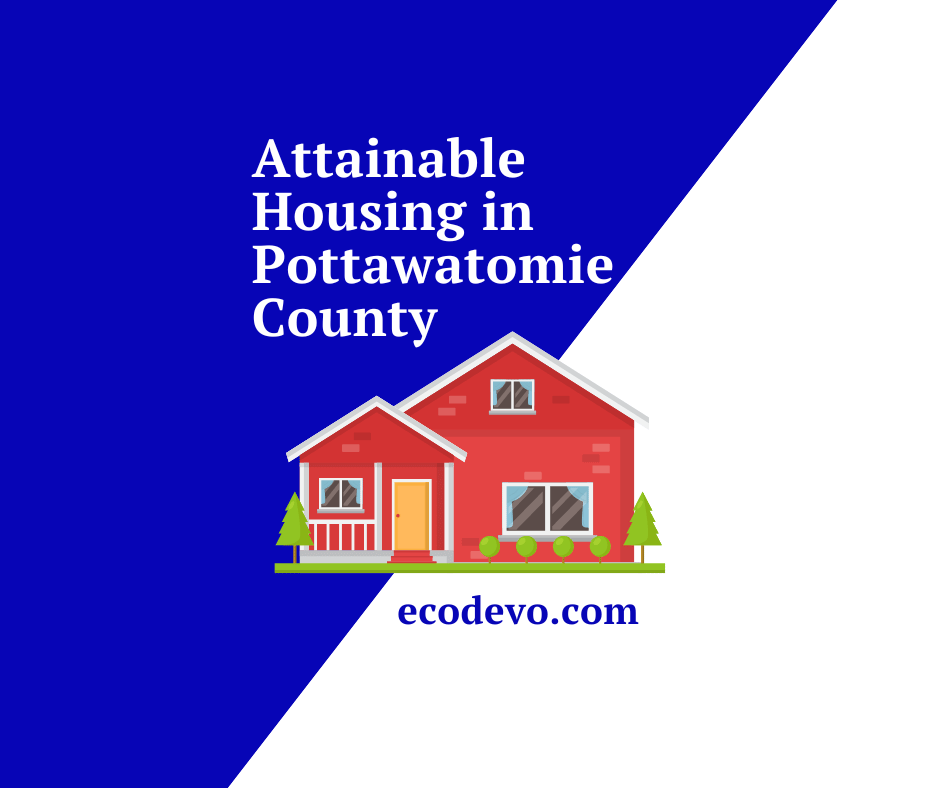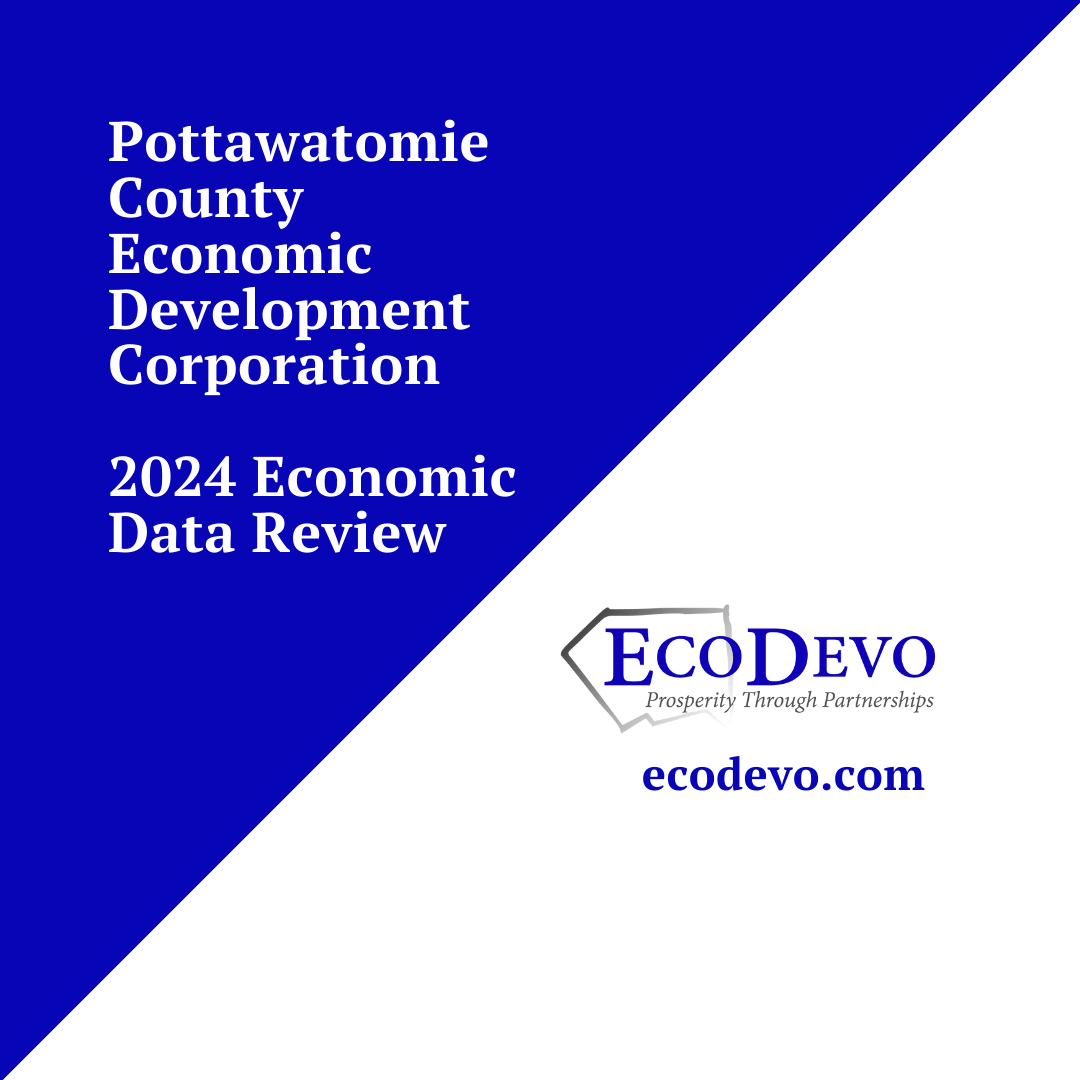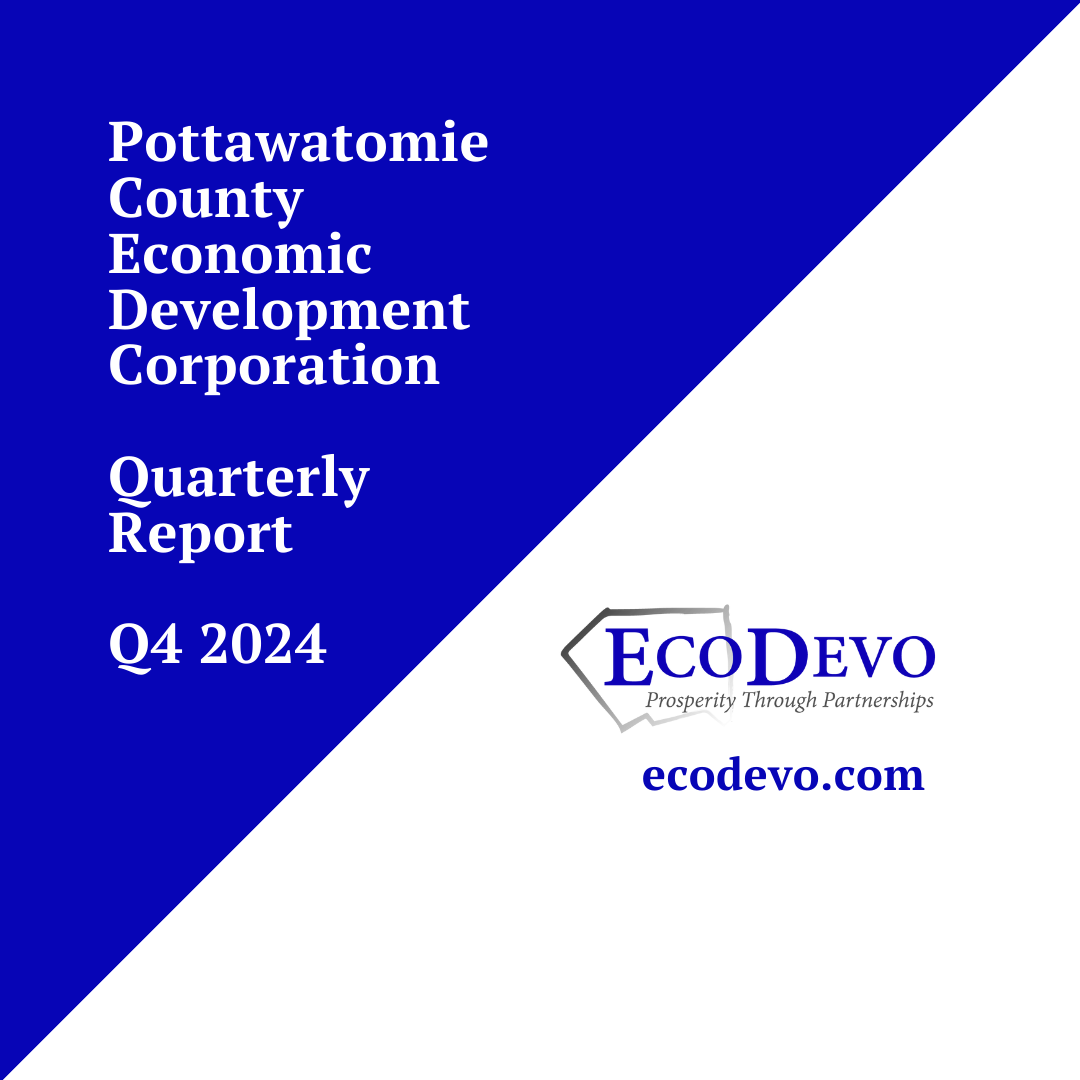
By: The Pottawatomie County Economic Development Corporation (PCEDC) | 9.12.24
Over the past year, as the PCEDC Board of Directors has been updating the organization’s vision, mission, and priorities and hired a new Executive Director, housing has been high on the list of conversations.
Affordable Housing is a National Issue
Housing affordability has become a widespread issue across the United States, affecting both urban areas and small rural communities. Several factors contribute to the current unaffordability of housing, even in places where housing was traditionally more affordable. Key reasons include rising construction costs, land shortages, population shifts, wage stagnation, and regulatory barriers, among others. Addressing these issues will require coordinated efforts from local governments, developers, and community organizations to create more affordable housing options and support sustainable economic development in these communities.
Attainable housing is a foundational element of economic development. Community involvement in promoting attainable housing ensures that the local economy remains competitive, resilient, and inclusive, while supporting the long-term growth and well-being of the community.
Workforce Attraction and Retention
- Affordable Housing for Workers: A critical factor in attracting and retaining workers is the availability of attainable housing. When housing is too expensive or limited, it can be a barrier for workers, particularly in lower and middle-income brackets, to live in the area. Community involvement in the issue helps ensure there’s housing that meets the needs of a diverse workforce, which is essential for maintaining and growing a strong labor pool.
- Talent Retention: Without adequate attainable housing, skilled workers may relocate to other areas with more affordable living options. This can hinder the county’s ability to retain talent and support existing businesses.
Business Attraction and Expansion
- Incentive for Business Investment: Companies considering relocating or expanding in a region often evaluate the availability of affordable housing for their employees. Efforts to promote attainable housing can make the area more attractive to businesses by ensuring that there’s enough housing for their workforce, supporting local recruitment efforts.
- Supporting Local Businesses: Attainable housing allows for a stable and diverse population, which is vital for local businesses. If workers can afford to live in the area, local businesses benefit from a reliable customer base and employee pool.
Economic Stability and Growth
- Building a Resilient Economy: Attainable housing supports a balanced economy by enabling more people to live close to where they work, which reduces commuting costs and fosters local spending. This helps create a stronger and more resilient local economy by increasing demand for local services and goods.
- Attracting Diverse Industries: A lack of affordable housing can limit the types of industries that can operate in a community. By promoting attainable housing, communities ensure that the area can support industries with varying salary levels, from retail and hospitality to manufacturing and technology.
Addressing Housing Shortages
- Mitigating Housing Gaps: Housing shortages, particularly for affordable or workforce housing, can create significant economic challenges. Communities can identify these gaps through research and help facilitate partnerships between developers, local governments, and community groups to address them. Ensuring there is adequate attainable housing is critical for sustainable economic development.
- Planning for Future Growth: As the county grows, community involvement helps ensure that the supply of attainable housing keeps pace with demand, which is critical for long-term economic success.
Community Wellbeing and Quality of Life
- Reducing Economic Disparities: By promoting attainable housing, communities can help reduce economic disparities, ensuring that people from various income levels have access to housing. This improves overall community well-being and fosters a more inclusive economic environment.
- Improving Quality of Life: Access to attainable housing improves the quality of life for residents by providing stable living conditions, reducing stress related to housing costs, and allowing individuals to live near their workplaces, schools, and amenities. This contributes to a healthier, more productive community, which is beneficial to the economy.
Support for Infrastructure Development
- Coordinating with Local Governments: Housing developments often require infrastructure improvements, such as roads, utilities, and public services. Communities can play a role in aligning housing development with broader infrastructure planning to ensure that economic development efforts are well-supported and sustainable.
- Leveraging Incentives: Communities can help facilitate financing solutions, such as tax incentives or grants, to promote the development of attainable housing. Their involvement can help bridge the gap between public and private interests, ensuring that housing projects receive the support they need.
Fostering Public-Private Partnerships
- Bridging the Gap Between Sectors: Communities can facilitate conversations and partnerships between developers, local governments, businesses, and community groups. Local involvement helps ensure that housing development is part of a broader, coordinated strategy for economic growth and community development.
- Advocacy and Education: Communities can advocate for policy changes or initiatives that encourage the development of attainable housing. They can also educate stakeholders about the economic benefits of such housing, helping to overcome opposition or misconceptions.
In summary, attainable housing is a foundational element of economic development. A county economic development organization’s involvement in promoting attainable housing ensures that the local economy remains competitive, resilient, and inclusive, while supporting the long-term growth and well-being of the community.
Read More:
What is “Affordable Housing” in Pottawatomie County? A Math Problem
Current Housing Needs in Pottawatomie County
Housing in Pottawatomie County: Spruce Apartments Case Study
Housing Affordability in Pottawatomie County and Beyond
Missing Middle Housing: Thinking Big and Building Small to Respond to Today’s Housing Crisis



